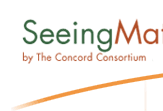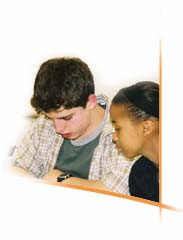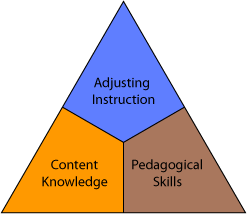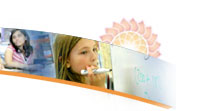 |
Bibliography Black, P., & Wiliam, D. (1998). Assessment and Classroom Learning. Assessment in Education, 5(1), 7-74. Borassi, R., & Fonzi, J. (2002). Analyzing promising professional development experiences for mathematics teachers: Discussing cases. In NSF-DEHR-DESIE (Ed.), Foundations: Professional Development that Supports School Mathematics Reform (Vol. 3, pp. 67-82). Arlington, VA: NSF. Bransford, J., & Vye, N. (1989). Cognitive research and its implications for instruction. In Resnick, L., and Klopfer, L. (Eds.). Toward the thinking curriculum: Current cognitive research, 171-205. Alexandria, VA: Association for Supervision and Curriculum Development. Comiti, C., & D. L. Ball. (1996). Preparing teachers to teach mathematics: A comparative perspective. In A. Bishop & C. Kreidt-Keitel (Eds.), International Handbook on Mathematics Education (pp. 1123-1153). Dordrecht, Netherlands: Kluwer Press. Ferrini-Mundy, J., & Burrill, G. (2000). Preparing for the teaching of algebra in secondary schools: Challenges and promising directions. Paper presented at the National Summiton the Mathematical Educaiton of Teachers 2000. Kelly, A. E., & Lesh, R. (2000). Handbook of research design in mathematics and science education. Mahwah, NJ: Lawrence Erlbaum Associates. Merseth, K.K. (2003). Windows on teaching math: Cases of middle and secondary classrooms. New York, NY: Teachers College Press. Weiss, Iris R., Pasley, Joan D., Smith, P. Sean, Banilower, Eric R., and Heck, Daniel J. (2003). Highlights Report: A Study of K–12 Mathematics and Science Education in the United States. Chapel Hill, NC: Horizon Research, Inc. (www.horizon-research.com) Wittrock, M. C. (Ed.). (1986). Handbook of Research on Teaching (Third ed.). New York: Macmillan. |
 |
©2005 The Concord Consortium
Home | About Us | Seeing Math™ Elementary | Seeing Math™ Secondary | Try Seeing Math™ | Resources | Contact Us | Site Map

 Seeing Math™ courses are built on a strong research foundation — mathematics teacher profession development (TPD) research and mathematics education research. The design and structure of our courses are grounded in TPD research. However, we were also strongly influenced by research demonstrating the most effective ways students learn mathematics. Using these two cornerstones, we were able to build a TPD course in which participants modeled the way research suggests they teach their students.
Seeing Math™ courses are built on a strong research foundation — mathematics teacher profession development (TPD) research and mathematics education research. The design and structure of our courses are grounded in TPD research. However, we were also strongly influenced by research demonstrating the most effective ways students learn mathematics. Using these two cornerstones, we were able to build a TPD course in which participants modeled the way research suggests they teach their students.

